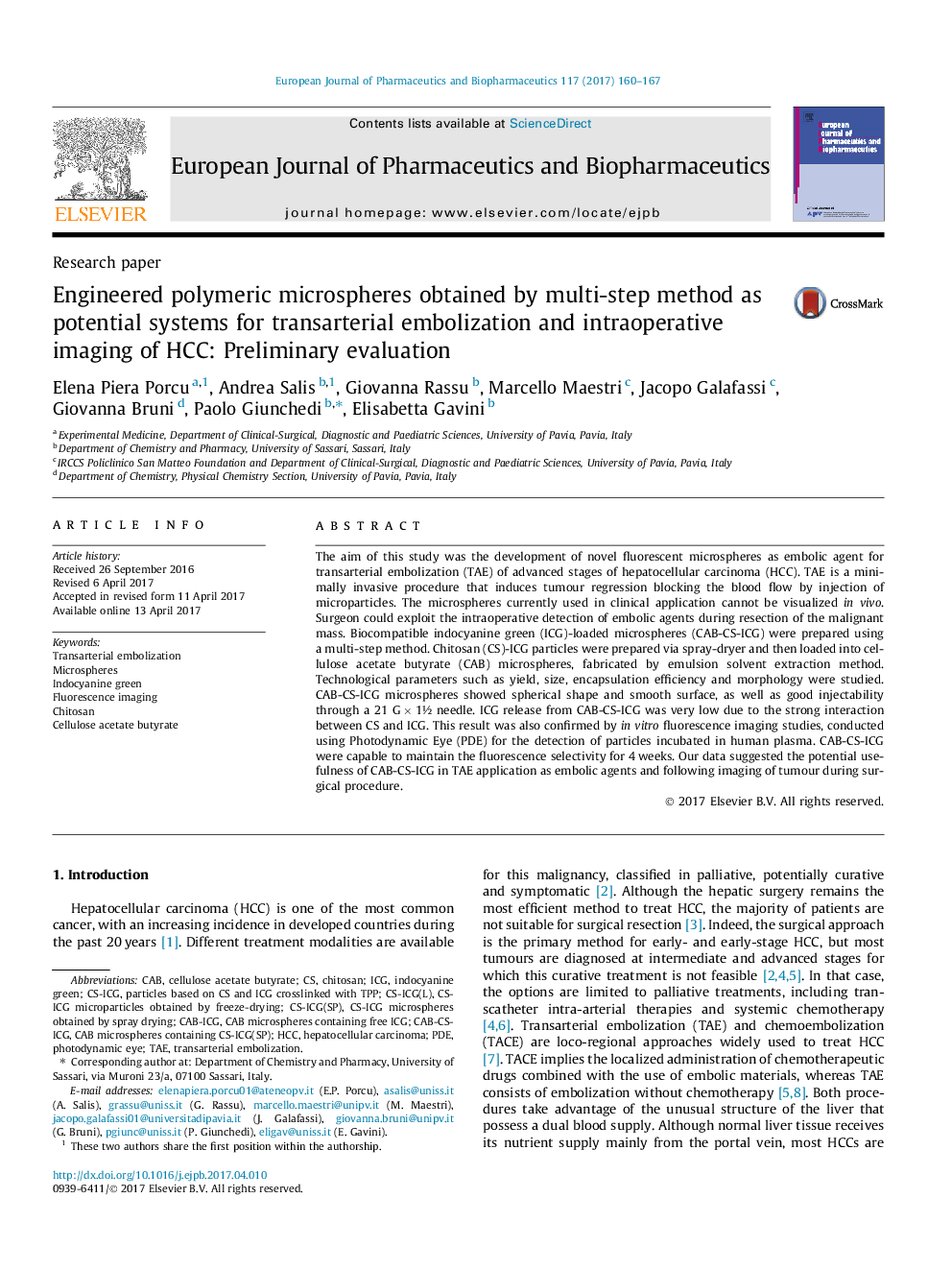| Article ID | Journal | Published Year | Pages | File Type |
|---|---|---|---|---|
| 5521506 | European Journal of Pharmaceutics and Biopharmaceutics | 2017 | 8 Pages |
The aim of this study was the development of novel fluorescent microspheres as embolic agent for transarterial embolization (TAE) of advanced stages of hepatocellular carcinoma (HCC). TAE is a minimally invasive procedure that induces tumour regression blocking the blood flow by injection of microparticles. The microspheres currently used in clinical application cannot be visualized in vivo. Surgeon could exploit the intraoperative detection of embolic agents during resection of the malignant mass. Biocompatible indocyanine green (ICG)-loaded microspheres (CAB-CS-ICG) were prepared using a multi-step method. Chitosan (CS)-ICG particles were prepared via spray-dryer and then loaded into cellulose acetate butyrate (CAB) microspheres, fabricated by emulsion solvent extraction method. Technological parameters such as yield, size, encapsulation efficiency and morphology were studied. CAB-CS-ICG microspheres showed spherical shape and smooth surface, as well as good injectability through a 21 G Ã 1½ needle. ICG release from CAB-CS-ICG was very low due to the strong interaction between CS and ICG. This result was also confirmed by in vitro fluorescence imaging studies, conducted using Photodynamic Eye (PDE) for the detection of particles incubated in human plasma. CAB-CS-ICG were capable to maintain the fluorescence selectivity for 4 weeks. Our data suggested the potential usefulness of CAB-CS-ICG in TAE application as embolic agents and following imaging of tumour during surgical procedure.
Graphical abstractDownload high-res image (125KB)Download full-size image
